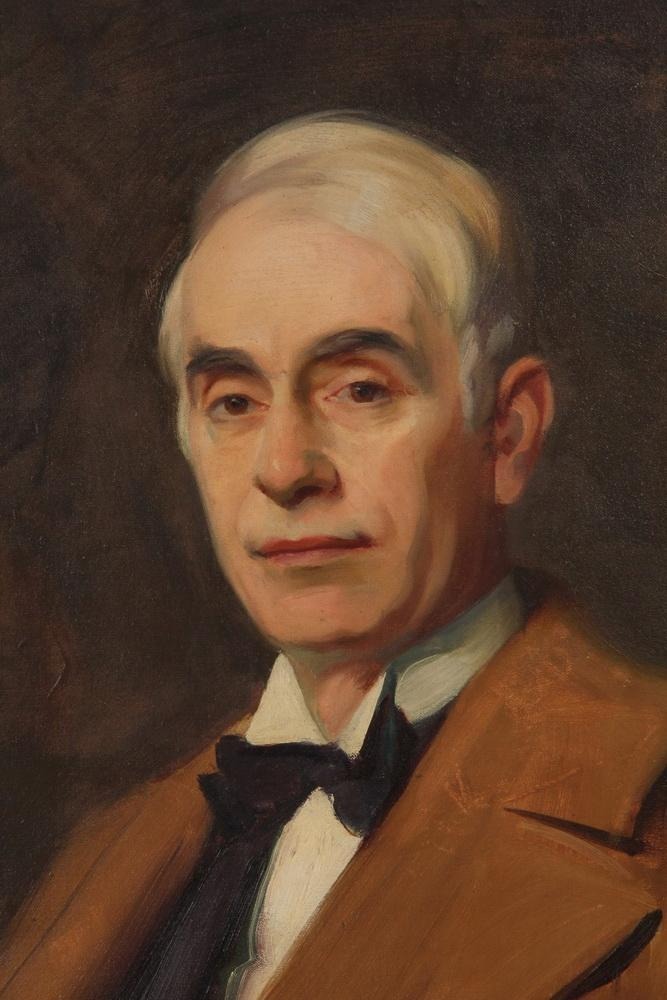

Franklin Booth
US
172
Artworks
1874 - 1948
Lifespan
Artist Biography
Franklin Booth, born on July 18, 1874, in Carmel, Indiana, was an American artist whose distinctive pen-and-ink illustrations left an indelible mark on early 20th-century visual culture. Raised on a farm, his artistic inclinations emerged early. Fascinated by illustrations in magazines like *Scribner's* and *Harper's*, Booth meticulously copied them, mistakenly believing they were pen-and-ink drawings. Many were, in fact, wood engravings, and this misunderstanding serendipitously guided him to develop his signature style: a painstaking technique employing thousands of individual lines to create nuanced tones and textures. This self-taught method, born from dedication, defined his artistic journey. His formal education included the Quaker Academy at Westfield, but his deepest artistic lessons derived from observing nature and his belief that art is universally accessible to those who seek it. Brief three-month stints at the School of the Art Institute of Chicago and the Art Students League of New York constituted his limited formal art training.
Booth's unique visual language was characterized by intricate detail, dramatic use of scale—often featuring vast landscapes or grand architecture dwarfing tiny figures—decorative scrolls, classical hand lettering, and expressively gnarled trees. His ability to replicate the rich tonality of wood engravings through meticulously placed pen strokes set him apart. His professional career began at the *Indianapolis News* (1899-1904), where he published illustrations with his own verses. In 1905, Booth traveled to Europe, visiting Rome, Paris, and briefly studying under Robert Henri in Spain, though this primarily enriched him personally rather than overtly influencing his established style. Upon returning, he worked for the *New York Daily News* and other newspapers. His exceptional draftsmanship quickly made him a sought-after illustrator, lauded as "the best pen-and-ink man in America" by one editor, and an early pioneer of modern ex libris design.
The early 20th century saw Franklin Booth's illustrations prominently featured in leading periodicals such as *Scribner's Magazine*, *Good Housekeeping*, *Collier's*, *Harper's Magazine*, and *The Saturday Evening Post*. His art, with its grand sense of space and meticulous detail, perfectly complemented poetic or editorial content. Booth's talent extended to book illustration, creating memorable visuals for works like James Whitcomb Riley's *The Flying Islands of the Night* (1913), featuring evocative watercolors. He collaborated with Theodore Dreiser on *A Hoosier Holiday* (1916), providing charcoal sketches, and illustrated Mark Twain's *The Prince and the Pauper* (1917). Beyond editorial work, Booth excelled in commercial art, creating iconic advertising for Rolls-Royce, Whitman's Candy, Bulova Watches, General Electric, Paramount Pictures, and the Estey Organ Company.
During World War I, Franklin Booth dedicated his skills to the war effort, creating powerful posters for recruitment and fundraising, and illustrating for the Red Cross and other wartime materials. As Art Deco's cleaner lines gained popularity, Booth's intricate, classical style became less common in mainstream magazines, yet his work continued in commercial publications and catalogs, maintaining its high quality. A passionate advocate for art education despite his largely self-taught background, Booth co-founded the Phoenix Art Institute in New York in 1925, teaching there for 21 years. He shared his insights through articles for the *Professional Art Quarterly* and continued producing significant works, including illustrations for the *Telephone Almanac* and "A Continent Is Bridged" (1940) for AT&T, alongside wildlife conservation stamps in 1941.
Booth resided in New Rochelle before settling in a New York City studio, often returning to Indiana for summers. He was friends with poet James Whitcomb Riley and identified as a Socialist and Christian Scientist. In 1923, he married Beatrice Wittmack. After a stroke in 1946, Booth passed away on August 25, 1948, in his studio; his ashes were scattered in Carmel, Indiana. His legacy endures through his unique "painterly" penwork, which influenced later illustrators, including comic book artists. Posthumously inducted into the Society of Illustrators Hall of Fame in 1983, his contributions were further recognized with a USPS commemorative stamp in 2001. Praised by contemporaries like Norman Rockwell, Booth's art continues to inspire admiration for its masterful technique and profound beauty.